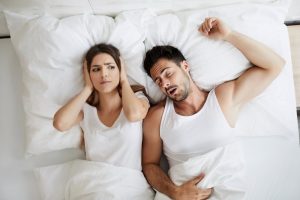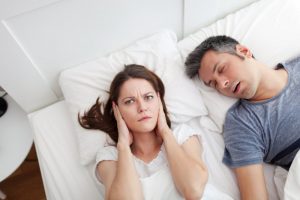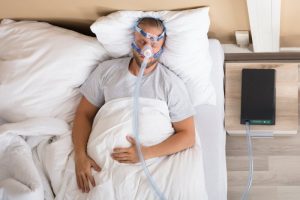Sleep Dallas Blog
Seratonin & Sleep
July 11, 2013
Question:
Maybe Kent or Norm can let us all know about the biophysiology behind the research that is now showing the effects that Seratonin has on sleep disordered breathing.
Dr. Smith:
Oddly enough, seratonergic agents and precursors to seratonin such as L-tryptophan have been studied for more than 25 years as meds to HELP OSA. In fact, L-tryptophan was shown to decrease obstructive events AND increase REM back in 1983, but it’s been on and off the market several times for various reasons related to side effects.
Currently, several of the big boys in pharmaceuticals are working on seratonin ANTAGONISTS in the sleep aid market. So, there’s money to be found in them there pills…..
Anti-depressants & Sleep Studies
June 27, 2013
Question:
I have a patient who has opted to seek counsel with their physician regarding a sleep study. She has tremendous daytime drowsiness among other symptoms.
Originally, her doctor persuaded her to not visit a sleep center for reasons I can only imagine. In the meanwhile, at my prodding, she has visited her doctor again and he wrote a script for a PSG study at her local hospital. However, the doctor also prescribed Lexapro to ‘keep her alert’ during the day so that she would have a nice sleep the nite of the study. If I remember from your class, that class of drugs limits or reduces REM sleep. Do I recall correctly?
Dr. Smith:
Lexapro and other anti-depressants will remove REM sleep, which indirectly improves the AHI, but at the expense of a valuable segment of sleep. They will sleep better if their anxieties are preventing sleep initiation, so it can be helpful, but will not give a true picture of the patient’s sleep architecture. That may or may not matter to the sleep physician, but I would ask the expert before deferring to the general MD.
Screening For Sleep Apnea
June 20, 2013
Question:
I seem to have a couple of patients who complain of snoring and want me to make them a snoring appliance, but are reluctant to spend the time & effort to go to the sleep clinic for a baseline.
How would you feel about screening these patients with a home monitor to r/o significant apnea? If the screening is negative, I would go ahead and make the snoring appliance with some degree of confidence that I was not ignoring an apnea problem. If it is positive, then use the results of the screening to encourage them towards complete diagnosis for sleep apnea.
What monitor would you suggest for this? Also, would I need to be certified to read the results?
Dr. Smith:
That’s an OK plan, as long as you follow them up with home monitoring to make sure the appliance is removing any events. That way, you can treat anyone up to about 30 events per hour, and even higher numbers if they have failed CPAP. There is no certification for reading the studies, but it does take some education. I love the Watch-PAT 200, but it’s more robust, and you may want to spend less. The ApneaLink is a “screener” at a lesser fee, but it all depends on what you want.
In great shape, but sleep apnea exists?
June 6, 2013

Q: I don’t get it, thought in order to have sleep apnea you had to be old, over weight and ugly, not in that order… I went to the Doc about restless leg syndrome and she said we need to do a sleep study and see just how bad you got it. Well I got it worst than I thought. I walked in to the waiting room at 8:45 pm and 5 other guys were sitting there cracking jokes about how their wife’s don’t put out any more and waiting to be escorted back to our rooms.
(more…)Surrounded By Snorers
May 30, 2013

Q: What is it with men and snoring??!! I don’t know many men who can honestly say that they don’t snore. My father-in-law did it; my dad does it. And, now, I am double-whammied, because I have not only one man in my house who snores but two!
(more…)CPAP Related Infections
May 23, 2013

Q: This morning I had a patient who uses a CPAP and also has problems with sinus infections. She asked me if I knew of any problems with the CPAP causing infections. I didn’t know and was wondering if you know.
Dr. Smith: Eye infections are common due to minor mask leaks, and sinus infections can get serious real quick. If there is rhinorrhea, this is a sign of trouble. Obesity and OSA can predispose someone to cerebrospinal fluid leak. OSA can cause an increase in intracranial pressure, and this is exacerbated with nasal CPAP. The cribiform plate is very thin, and this excess pressure can expose defects. Bottom line – make sure they are monitored very closely.
Periodic Limb Movements Without OSA
May 16, 2013
Q: I have a patient who has no sleep apnea and does not desaturate, but who has 60 periodic limb movements an hour. The sleep physician, a pulmonologist, referred him to an ENT for surgery to help the snoring, but said that since he wasn’t sleepy, we could ignore the limb movements for now. He did have about 30 arousals from limb movements each hour. What do you think of his advice?
Dr. Smith: PLMD often accompanies sleep disordered breathing. However, since his AHI and SpO2 are relatively normal, these movements do not appear to be related to his breathing at all. One movement every minute of the night is very excessive, and since he is also aroused out of normal sleep architecture every 2 minutes, I have to think this is affecting his sleep, even though he does not admit to sleepiness.
I have picked up early Parkinsons in a patient like this, so I am a bit sensitive to the issue, and would discuss a referral to rule this out if he was may patient. As the sleep MD is a pulmonologist, and not a neurologist, he would be less likely to make the connection. However, hopefully, I am just an alarmist, and the patient has little to worry about. Maybe you can make him an appliance for his snoring, then get him retested to see if the PLMD has improved.
The Importance of a Sleep Study
May 9, 2013

Every time I teach a seminar to dentists on treating snoring and sleep apnea, I get this question: “Dr. Smith, if I have a patient who comes in and says they want an appliance for their snoring, and that they know they don’t have sleep apnea, can’t I just make them a snore guard to help the snoring?”
It’s a legitimate question, and unless a doctor truly understands the field of sleep disorders, he or she could move down a path they should not have traveled. Allow me to explain.
(more…)“My husband snores, but I never see him stop breathing or gasp for air, so I’m sure he doesn’t have sleep apnea”
May 2, 2013
I’m afraid bed partners are ill-suited to be airway diagnosticians, regardless of their sincerity. There are reasons for this, of course, so allow me to explain.
First, audible gasps and breathing pauses are not the only manifestations of sleep apnea. In fact, there is a condition known as silent apnea, where snoring does not even exist.
Secondly, many bed partners (and I am not saying you do this) will nudge their partner when they are snoring, urging them to move to a side sleeping position where the snoring is not so irritating. This will also lessen the likelihood of apneic episodes, but as soon as the non-snoring partner goes to sleep, the snorer might roll onto their back and succumb to a collapsed airway caused by gravitational forces.
Finally, unless you are awake, watching him sleep all night long, there are many phases of sleep staging, and some are more prone to causing sleep disordered breathing. The most common would be REM sleep, as he is essentially paralyzed during vivid dream action (for obvious reasons). The majority of REM sleep occurs during the latter third of the night, so if you primarily watch or listen during the first hour or so, he is not likely to get into any REM sleep at all!
I hope this helps you understand why it is so important that your husband gets a sleep study, so that we can rule in or out the existence of sleep apnea. You could very well save his life by urging him to seek a diagnosis of his sleeping condition.
Childhood Sleep Apnea
April 19, 2013
Q: Just wondered what you know about sleep studies for kids. One of the children in my practice sounds like he has some nasal obstruction, but no snoring that the parents have detected, and he is not heavy. So I have my doubts about tonsils, but I have not examined him. Wonder if he is more like UARS? Do you know anything about CPAP for kids? Oh, and he also sleepwalks.
Dr. Smith: No experience at all with childhood epilepsy and OSA. However, yes, I treat children with OSA…had one in today with great parents who both come with him at appointments. Mom was going in to hold his jaw forward for at least an hour every night to get him at least SOME restful sleep. Sleep centers are very comfortable with studies on children. Sleep walking shows no neurological effects or predispositions, so no worries there.
Children do not have to snore at all to have OSA, and when they do, the palatine tonsils are rarely (about 2% of the time) the cause. MUCH more common to have adenoidal obstruction (about 38% of the time, if memory serves), so his nasal obstruction is likely the source. I would get him in to see about the adenoids, then get a sleep study if this does not appear to be the problem. They put CPAPs on small children, but I doubt he will need that.
